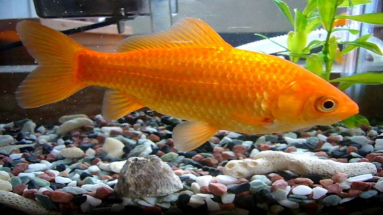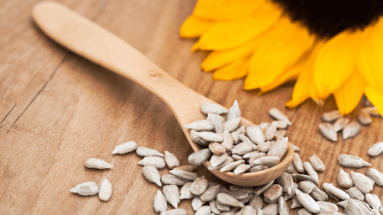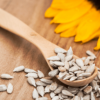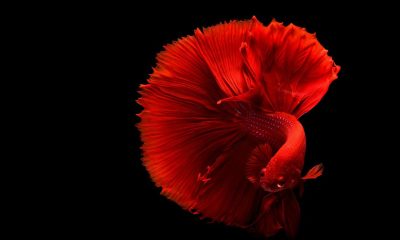Foods
Why My Comet Gold Fish Tail Bleeding?
I have found great pleasure in growing goldfish, due to their hardy nature and ability to adapt to changing conditions. However, there have been times where worrying issues have arisen, such as illnesses or parasites. For this reason: It’s important to provide the goldfish with an ideal living environment that is clean and free from pollutants, and includes an ample amount of space for them to swim. Changing of water regularly and to maintain the tank are also important, as an unhealthy environment can quickly cause health problems. It can be difficult to diagnose issues with goldfish: So it’s important to monitor them regularly and seek help from a qualified veterinarian or aquarist if any signs of distress or illness arise.
Example:
I have been a goldfish owner for many years. I have developed a deep understanding of their behavior and how to best care for them. One of the more challenging issues. I have encountered was when I noticed that my goldfish were bleeding and developing red patches across their bodies. After much research and careful observation. I was able to identify the underlying cause and take the necessary steps to treat it. I now understand that this is a common problem with goldfish, and I am confident that I can quickly identify this issue in the future and take the necessary steps to treat it.
Why My Comet Gold Fish Tail Bleeding?
Goldfish are particularly vulnerable to ammonia poisoning, which can be the reason of variety of adverse health effects. A goldfish when expose to high levels of ammonia, the gills are burn and the fish ability to breathe is compares. This can manifest as red patches on the fish’s body, as well as excessive bleeding from the gills and other areas of the body. Furthermore, the fish may appear lethargic, have difficulty swimming, and experience a weakened immune system. To prevent ammonia poisoning, goldfish owners should regularly checking the level of ammonia in the tank and take steps to reduce the concentration of ammonia by changing the water or adding ammonia-reducing chemicals.

However, goldfish can also be prone to disease and infection due to mechanical injuries in the tank, so it is important to take proper care and monitoring of your tank to ensure the health of your goldfish. Common illnesses in goldfish include Ich, Velvet, Fin Rot, Dropsy, and Ulcers, which can all be cause by a variety of factors such as bad water quality, overcrowding, and inadequate nutrition. These diseases can cause physical and physiological damage, so it is important to take proactive steps to prevent and treat these illnesses as soon as possible. Luckily, goldfish are hardy creatures and can bounce back quickly with quick action and proper treatment.
Causes Of Bleeding In Goldfish:
As we move forward, I will list a few more possible causes of bleeding in goldfish. These include bacterial infections, such as columnaris or aeromoniasis, parasitic infections, such as ichthyophthirius, or protozoan infections, such as Trichodina or Oodinium. Injuries from sharp or rough objects, or from other fish or invertebrates, can also lead to bleeding in goldfish. Additionally, goldfish may bleed if they are expose to water that is too cold or too hot, or if they are suffering from a nutritional deficiency. Finally, bleeding can sometimes occur as a result of tumors, or if the goldfish is expose to toxic substances.
When dealing with a difficult aquarium situation, it is important to be thorough and use the right tools to achieve the best results. To this end, I would like to present five steps that will likely improve the situation and bring your aquarium to the next level. These steps include using the API Aquarium Test Kit to check accurately for ammonia spikes. This kit is a great way to determine the current state of your tank and monitor its progress over time. This can be complete conveniently with the include color-matching chart and instructions. Furthermore, the kit comes with a variety of other tests that can be use to check for pH, nitrites, nitrates, and other chemical levels.
Is My Goldfish Bleeding, And Why? (Tail, Body, Fins, & Gills)
If you observe your goldfish bleeding, you should be concerned as this is not a normal occurrence. It is important to identify the factors causing the bleeding by assessing the location of the injury. For example, if the wound is on the fish’s body, then it could be a result of a physical injury or a bacterial infection. Furthermore, if the bleeding is coming from the gills or eyes, then the goldfish may be suffering from a fungal infection or parasites. In any case, it is essential to take action and find the cause of the bleeding to ensure the health of the goldfish. To do so, it is recommend to first test the water quality and parameters such as pH, ammonia, nitrite, and nitrate.
Factors Of Causing A Goldfish To Bleed:
The factors causing a goldfish to bleed underneath the scales can vary greatly compared to those causing bleeding seen around the fins. While certain conditions may cause bleeding in more than one area, it is more likely that the cause of bleeding in each area is different. Possible causes of bleeding under the scales can include abrasions from rocks or other hard surfaces in the tank, bacterial or fungal infections, parasites, or a lack of nutrition. Causes of bleeding around the fins may include aggression from other fish, bacterial or fungal infections, parasites, or physical damage from the environment or tank decorations. It is important to note that in some cases, the underlying cause of bleeding in both areas will be the same, particularly in cases of bacterial or fungal.

It would helpful if you also try to find for additional signs like lethargy and loss of appetite, as these are common indicators of several illnesses and can help you narrow your list of potential diseases and infections down to a more manageable number. If you have opted to take your fish to a vet, they will likely assess the following symptoms: any discoloration, an unusual increase in mucus production, any visible wounds or deformities, difficulty swimming, and any other signs of distress. The vet may also be able to provide a more accurate diagnosis by performing a physical examination of the fish, utilizing lab testing, and/or conducting an ultrasound. Through this comprehensive approach, the vet should be able to accurately pinpoint the cause of your fish.
High Levels Of Ammonia:
Ammonia is an integral component of any aquarium environment, and is produce when organic matter such as waste and leftovers decompose. Unfortunately, ammonia poisoning is a common concern among aquarists, as it can have a detrimental effect on the gills of the fish living in the aquarium, compromising their ability to breathe. In order to prevent ammonia poisoning, aquarists must take measures to reduce the amount of organic material in the aquarium, as well as ensuring regular water changes occur to keep levels at a minimum. Regular water testing is also essential, as this allows aquarists to monitor and identify any changes in ammonia levels. If ammonia poisoning should occur, it is important to act quickly and implement a treatment plan.
High levels of ammonia can be extremely toxic to fish, resulting in a range of unpleasant symptoms. These include gills that may appear to be bleeding, labored breathing, lethargy, and a lack of appetite. If ammonia poisoning persists for a prolonged period of time, the fish may develop bloody patches across its body, which can be a sign of severe damage.
It is important to maintain healthy levels of ammonia in your tank to ensure the wellbeing of your fish. It is also important to keep an eye on the levels of ammonia and seek professional advice if it appears to be too high. Testing the water regularly is a key part of ensuring the health of your fish. Increases in ammonia also have an impact on pH, which is essential for the health of the fish. Your goldfish experience more than simply inconvenience when the pH is off. If left untreated, it can have devastating effects on their health, one of which is bleeding gills.
The Goldfish Has A Problem:
This is an essential factor to bear in mind: injuries occur in aquariums more often than most people think. An active and excitable goldfish, for instance, can easily collide with the sharp corners of decorations, rocks, and other objects in the tank, leading to serious lacerations and abrasions. If the goldfish is keep with more aggressive fish, these tankmates can sometimes be violent and may attack the goldfish, often resulting in severe wounds and even death. In severe cases, poor water conditions can rapidly spread disease among fish, exacerbating harm. Taking precautions is vital to safeguard fish health and aquarium safety.
Injuries causing from physical altercations with hard objects are relatively easy to identify, as they usually leave visible marks such as lacerations and bruises. These wounds are usually bound to one area, and do not look like the ulcers and lacerations cause by infections. They are also accompanied by bleeding, which can help to differentiate them from other types of injuries. Injury severity varies based on impact force, with serious wounds necessitating medical attention due to potential complications. Conversely, minor injuries may only require basic first aid such as cleaning and dressing the wound. Regardless, it is important to be mindful of the signs of physical trauma and to seek help if the injury is severe.
A Parasitic Disease Is Carried By Your Goldfish.
Small parasites exist. It is bigger than bacteria but may be view under a microscope. They are also to blame for a long list of illnesses, the most prevalent of which include:
- Ich, also known as white spot disease, is a parasitic infection that affects many species of fish, including goldfish. It is characterize by the presence of white dots all over the fish’s body, fins, and gills. When the fish rubs against objects in the tank to alleviate the discomfort that the infection causes, it can lead to further irritation and even bleeding. Additionally, the parasite can cause discoloration on the fish’s body, as well as fin and tail rot. If left untreated, Ich can lead to more serious issues, such as organ failure, weakened immune system, and even death. Therefore, it is important to identify the signs of Ich and implement a treatment plan.
- Anchor Worms (Lernaea cyprinacea) are common parasites that affect a variety of fish, including goldfish. Often causing bleeding at the site where the worms penetrated the skin. In some cases, the parasites can be easily visible as they protrude from the skin. For anchor worm treatment, avoid manual removal to prevent fish trauma, bleeding, and infection risks. Chemical treatments offer safer alternatives. If you suspect your goldfish have infect with anchor worms, it is important to consult a veterinarian.
- Velvet is cause by Amyloodium Ocellatum and generally appears as a yellow or light brown film of rust on the skin of the affected fish. Similar to Ich, anchor worms cause goldfish to scratch on objects, leading to abrasions and bleeding injuries. If left untreated, velvet can spread quickly and become a serious problem for the health of fish in an aquarium. Treatment for velvet involves the use of copper-based medications, which can be effective in combatting the disease. However, it is important to follow instructions carefully, as copper can also be harmful to fish in excessive amounts.
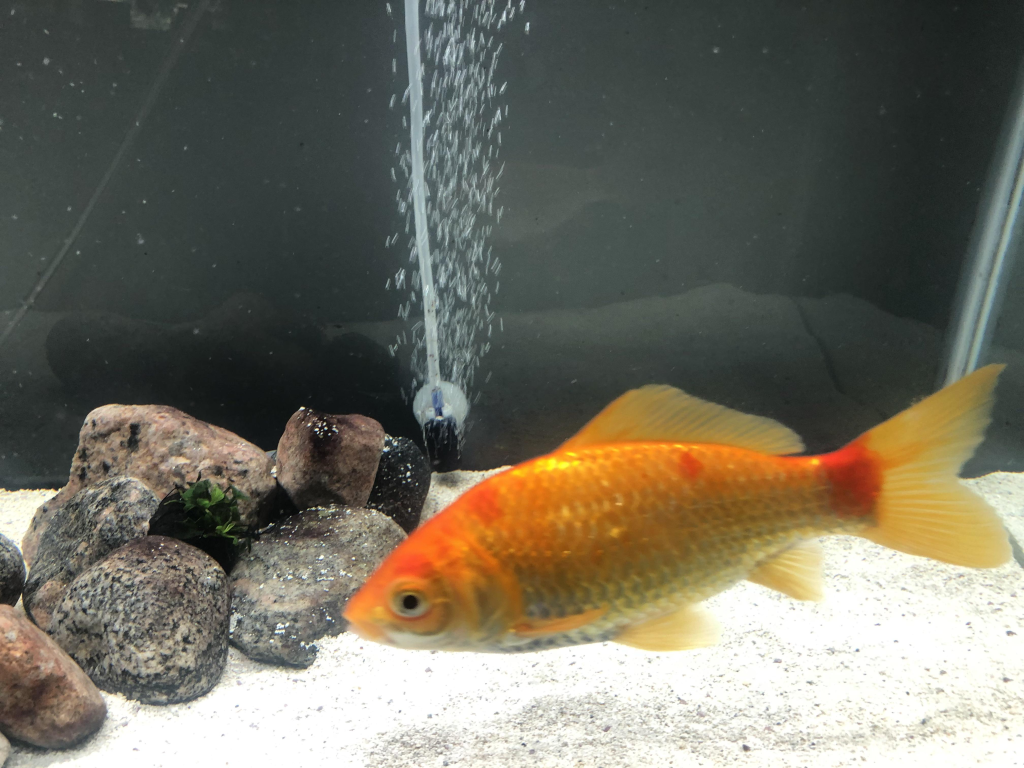
The Goldfish Contracting a Bacterial Illness:
When it comes to bleeding, there are so many bacterial illnesses that you should be worried about. Pay attention to the following:
- Pseudomonas Fluorescens is one of the microorganisms that has linked to fin rot. However, a lot of aquarists attribute the illness to stress and unclean tanks. The fins become discoloured and gradually fray until they completely fall off due to fin rot. The tail can also be impact. Bloody spots may appear on goldfish with fin rot in the afflicted area. These parts of the fish appear to be bleeding.
- Dropsy – People don’t always link bleeding to this condition. They are not mistake. It’s rare that dropsy will make you bleed. The condition may also damage your goldfish’s fins and leave red spots on its skin, which beginners can mistake for blood.
- Ulcers – As the name suggests, ulcers are open sores that may cover the entire body of the fish. There are numerous possible causes of ulcers. This contains Vibrio bacteria, Mycobacteriosis (which causes bleeding from skin ulcerations), and Edwardsiellosis (which also results in skin ulcerations). [6] The skin, fins, and tail may develop sores. The internal organs may bleed as a result of several disorders. They are quite grave.
You Have Hemorrhagic Septicemia In Your Goldfish:
Piscine Novirhabdovirus, a virus that generally infects aquatic hosts, has been linked to this condition.
It is characterized by open sores, bruised gills, and bleeding under the scales, among other signs. [8] In the end, it can result in death.
What To Do If A Goldfish Is Bleeding?
Some experienced methods are as follows:
How To Control Ammonia Spikes
A partial water change is the most obvious cure for ammonia toxicity. Use water conditioners to quickly neutralise ammonia if your fish needs help right away. This will allow you to perform smaller water changes that are less likely to upset your fish.
Goldfish are already fairly untidy fish. If you feed them too much, they’ll produce more waste than usual, which will raise the ammonia levels. Due to this, some aquarists limit feeding when ammonia levels are too high.
Correctly Replacing The Water:
You should do routine water changes to maintain the tank clean even if your ammonia levels are within range. Toxin levels won’t rise in the future if this is done. Regular water testing would also benefit your fish. Don’t let high levels of ammonia, nitrate, and nitrite surprise you. Your fish’s immune will likely be weakened by their presence, leaving them more susceptible to illnesses. Apply conditioners right away after changing the water. Hazardous substances like chlorine, chloramine, and copper will be removed as a result.
Treatment And Injury Prevention:
To avoid your goldfish from inadvertently cutting themselves, keep hard things with sharp edges out of the tank. The species should ideally be kept with tankmates that are safe for them, like as Platies and Zebra Danios. Antibiotics like erythromycin and minocycline can be used to treat existing wounds in fish. Epsom salt is used by some aquarists (link to Amazon). Pour four teaspoons of salt per gallon of water if you decide to use it. I advise doing it in a different tank.
Enhancing The Aquarium Environment
Keep the tank’s conditions appropriate. To make sure that the pH, temperature, and hardness are accurate, purchase a testing kit and use it frequently. Keep your goldfish in a tank with at least 20 gallons of water. Like other fish, they detest confined, tiny tanks. More significantly, because toxins build up so quickly, small tanks need a lot of maintenance.
Conclusion:
If your goldfish has started bleeding, check the water’s conditions first. Ammonia is the most important variable in this equation. Your goldfish’s gills may have been scorched if it was too high. Both internal and external bleeding may result from that. However, direct collisions may occur if the parameters are set properly. Make sure all sharp objects that can cut your fish are put away. In order to rule out an infection, you should also speak with an aquatic veterinarian. Isolate the bleeding goldfish to be safe and stop any possible spread.
Frequently Asked Questions
Why is my fishes tail bleeding?





